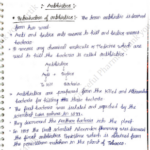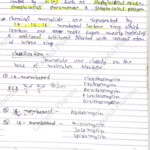Components of PCR
Template: DNA or cDNA. This includes DNA prepared from blood, sperm or any other tissue, from
older forensic specimens, from ancient biological samples or in the laboratory from bacterial colonies
or plaques as well as purified DNA.
Primers: Short Oligonucleotide sequences used for priming.
Ideal characterstics of Primer
➢ Ideal length of primer should be at least 18-30 nucleotides.
➢ They should have ideally 40-60% GC contents
➢ They should anneal to their complementary sequences at similar temperatures.
➢ Both primers should not be self complimentary to each other.
➢ Primers should not form secondary structures like hairpin structure.
dNTPs: dATP, dGTP, dCTP and dTTP, used at saturating concentration (200 m M each).
Enzymes: Thermostable DNA polymerases from a number of thermophilic bacteria are used for PCR.
The most common is Taq polymerase from Thermus aquaticus. It survives the denaturation step of
95ºC for 1-2 min, having a half-life of more than 2hr at this temperature. It carries a 5’-3’
polymerization dependant exonuclease activity, but lack in 3’-5’ exonuclease activity (proof reading).
Hence, it is more prone for introducing errors. There are high-fiedality thermostable enzymes with
3’-5’ exonuclease activity. e.g., Vent polymerase, pfu polymerase.
High fidelity enzymes Source
Pfu polymerase Pyrococcus furiosus
Vent polymerase Thermococcus litoralis
Pwo polymerase Pyrococcus woesei
Buffer: The standard buffer for PCR contains 50 mM KCl, 10 mM Tris.Cl and 1.5 mM MgCl2. pH is
approximately 7.2. The presence of divalent cations is critical (Mg2+).
Steps in PCR
PCR involves a repetitive series of temperature cycles. Each reaction cycle comprises of three stages
➢ Denaturation
➢ Primer annealing and
➢ Extension.
In the first step i.e. denaturation, the target DNA is separated into two strands by heating upto
95ºC.
The temperature is reduced to around 50-60ºC to allow the primers to anneal. The actual
temperature depends on the primer lengths and sequences- primer annealing.










